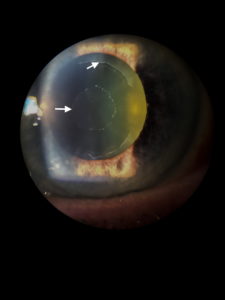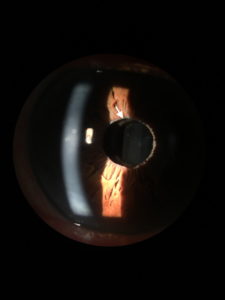alias: pseudoexfoliation syndrome
The term PEX syndrome describes set of symptoms, which follow acummulation of the pathologic granular material (pseudoexfoliations) on the intraocular structures.
Usually it is found in older people.
In the patients with PEX syndrome is quite high risk of developing glaucoma. Thus their dispensarisation is needed.
There is usually problem to dilate pupils of people with PEX syndrome during the ophthalmologic examination. Their pupils react poorly to mydriatics. It is not unusual even more than one hour waiting for the dilated pupil and even then the pupil doesn´t have to be wide enough.
From this poor mydriasis (how we call the dilatation of the pupil) result some risks for the intraocular surgery (because during the intraocular surgery we often need to look into the eye through the pupil – like in cataract surgery etc. – we want to have it as wide as possible).
There is also another risk for cataract surgery resulting from PEX syndrome. The presence of so called weak zonule is frequent. If the zonule (the structure on which the crystalline lens “hangs”) is very weak, it can be destroyed during the surgery and we can´t implant the new intraocular lens in it´s best place – into the capsule, but we have to find another way to fix it in the eye. Even if we implant the artificial lens into the capsule in PEX eye, there is some possibility of dislocation of the capsule with intraocular lens in the future.


